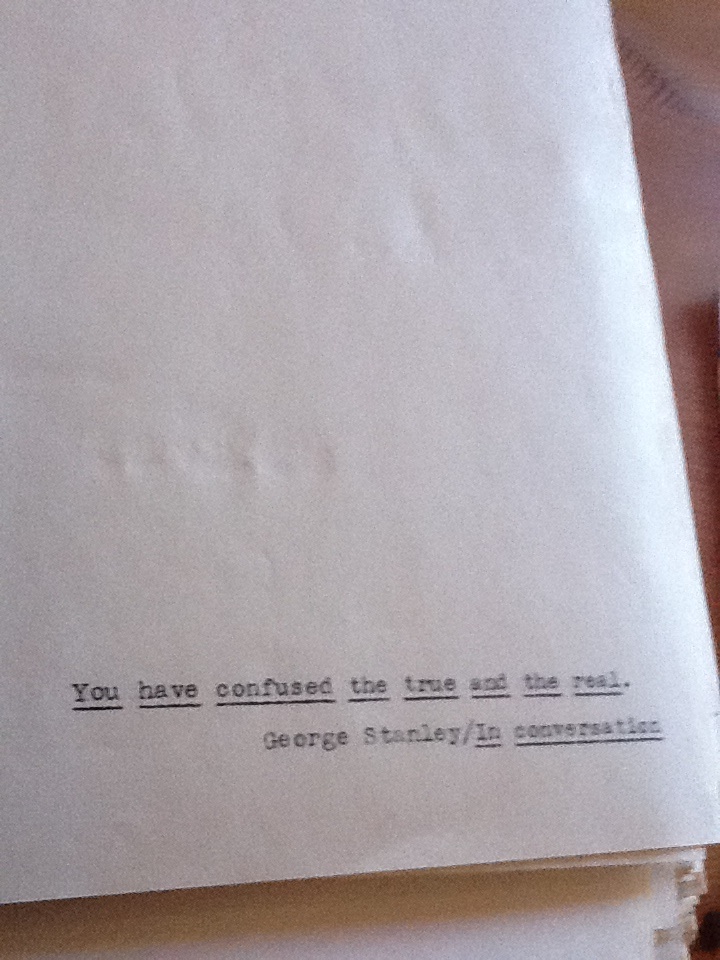Black Light (42 page)

In her journal, Hand once wrote, “I am being haunted by a town.” The town was Katonah, New York, which she transformed into Kamensic Village, the setting or background for much of her fiction. This photo from 1975 shows the train station where characters Lit and Jamie Casson make their escape at the end of the novel
Black Light
.

Hand recalls: “In 1976, I was hitchhiking in Putnam County, New York, with my friend Katy. A guy our age picked us up, we drove around and hung out for a few hours, and he then dropped me back at my parents’ house in Pound Ridge. It was only after I got home that I realized I’d left my journal in his car.
Flash forward to 1999, shortly after
Black Light
was published. I was visiting my folks in Pound Ridge when the phone rang: I picked it up and a voice asked, ‘Is this Elizabeth Hand?’ It turned out to be the guy who’d picked us up—he’d seen a copy of
Black Light
in his local bookstore and remembered my name (which was in the journal). And, when he went back and read the journal again (which he’d done back in 1976 as well—hey, I would have, too), he realized that some of the people and places I’d written about in the journal ended up in
Black Light
.”

Hand in proto-punk mode with some friends at their second New Year’s gathering at the Hotel Empire in New York City —at the time a “total dump” (just the way they liked it). Left to right: Michael, Oscar, Julie, Elizabeth, and Steve. Hand says: “The red blodge by my nose is actually my crimson fingernail and a cigarette. I was a chain smoker, also an early do-rag adapter. Oscar inspired Oliver in Waking the Moon; the book was dedicated to him.”

Hand in the early 1980s.

Hand read Samuel R. Delany’s
Dhalgren
when it first came out in 1975, and it was a huge influence on her early works, such as
Winterlong
. In spring 2012, Hand visited Washington, DC, and saw her dear friend Rafael Sa’adah, who had an amazing surprise in store: one of the original manuscripts of
Dhalgren
, which he’d acquired from a book dealer. Hand says, “Raf unwrapped it for the first time and we went through it page by page. Like entering a literary Tutankhamun’s tomb.” Hand took many photos of the text, including this shot of the novel’s epigraph, which she has always loved.
I
N THE COURSE OF
writing this novel, I referred to the research of many people, including the classic texts on Dionysos,
Dionysus: Myth and Cult
by Walter Otto and Carl Kerényi’s
Dionysos: Archetypal Image of Indestructible Life;
as well as scholarly work in mythology and folklore by Alain Daniélou, A.G. Ward, Eleanor Hull, E.O. James, Walter Burkert, Catherine Johns, Donald A. Mackenzie, J.D.S. Pendlebury, Arthur Evans, Walter Torbrügge, Ivar Lissner, Claude Levi-Strauss, and the redoubtable Jane Harrison. Most of all, I am indebted to the work of the Italian historian Carlo Ginsburg, whose books
The Night Battles: Witchcraft and Agrarian Cults in the Sixteenth and Seventeenth Centuries
and
Ecstacies: Deciphering the Witches’ Sabbath,
first introduced me to the Benandanti and Malandanti. Any factual errors are, of course, my own.
The trial of Giulietta is adapted from the late sixteenth-century trials of Paolo Gasparutto and Battista Moduco, as recorded in
The Night Battles
and translated by John and Anne Tedeschi.
Some of the history of Kamensic Village was based on
God’s Country: A History of Pound Ridge, New York,
by Jay Harris, as well as material compiled and published by the Pound Ridge Historical Society and safely kept for lo! these many years, by my parents. Thanks, Mom and Dad. I drew as well on the memories of my friends Kathleen Hart, especially her poems about Whitlockville, the drowned village beneath the Mianus reservoir; and Anne Wittman, who twenty years ago worked with me at the Bedford Village Courthouse Museum (open weekends, Closed Today). However, anyone looking for the boundaries of Kamensic should keep in mind Melville’s warning: “It is not down on any map; true places never are.”
My heartfelt thanks to the usual suspects: Martha Millard, Caitlin Blasdell, Jim Rickard, Paul Witcover, Christopher Schelling, Richard Grant, and especially John Clute.
All rights reserved under International and Pan-American Copyright Conventions. By payment of the required fees, you have been granted the non-exclusive, non-transferable right to access and read the text of this ebook onscreen. No part of this text may be reproduced, transmitted, downloaded, decompiled, reverse engineered, or stored in or introduced into any information storage and retrieval system, in any form or by any means, whether electronic or mechanical, now known or hereinafter invented, without the express written permission of the publisher.
This is a work of fiction. Names, characters, places, and incidents either are the product of the author’s imagination or are used fictitiously. Any resemblance to actual persons, living or dead, businesses, companies, events, or locales is entirely coincidental.
Grateful acknowledgment is made to the following for permission to reprint excerpts from copyrighted material: “The Intervention of the Gods,” in
The Complete Poems of Cavafy
, copyright © 1961, renewed 1989 by Rae Dalven, reprinted by permission of Harcourt Brace & Co.
copyright © 1999 by Elizabeth Hand
cover design by Angela Goddard
978-1-4532-7897-0
This edition published in 2012 by Open Road Integrated Media
180 Varick Street
New York, NY 10014

FROM OPEN ROAD MEDIA

Available wherever ebooks are sold


Open Road Integrated Media
is a digital publisher and multimedia content company. Open Road creates connections between authors and their audiences by marketing its ebooks through a new proprietary online platform, which uses premium video content and social media.
Videos, Archival Documents,
and
New Releases
Sign up for the Open Road Media newsletter and get news delivered straight to your inbox.
Sign up now at